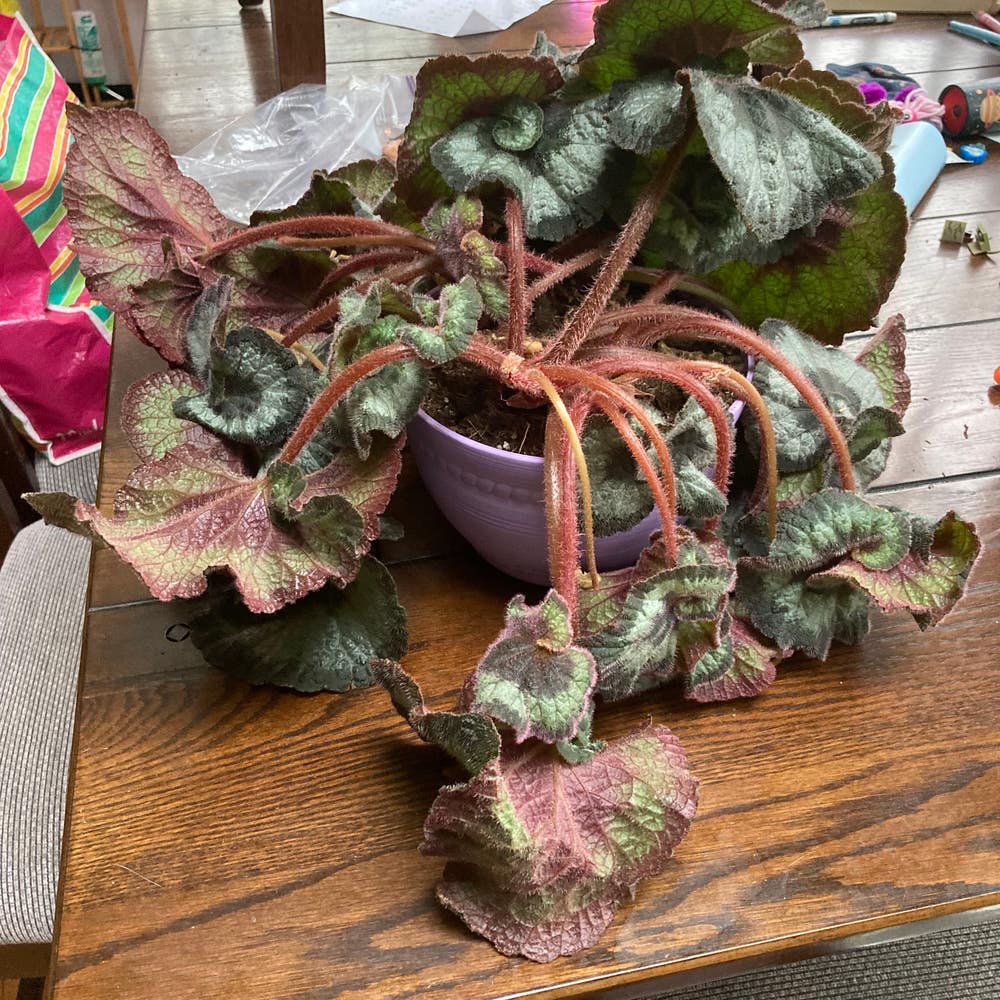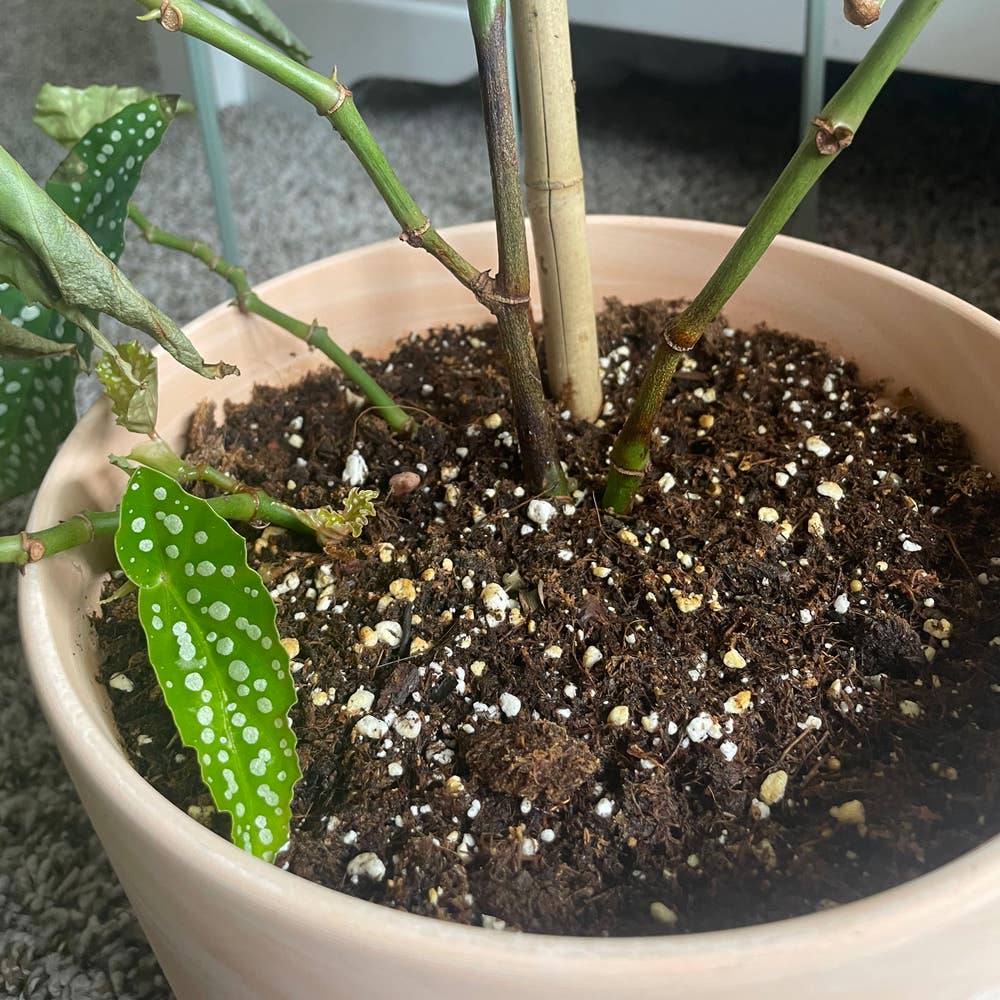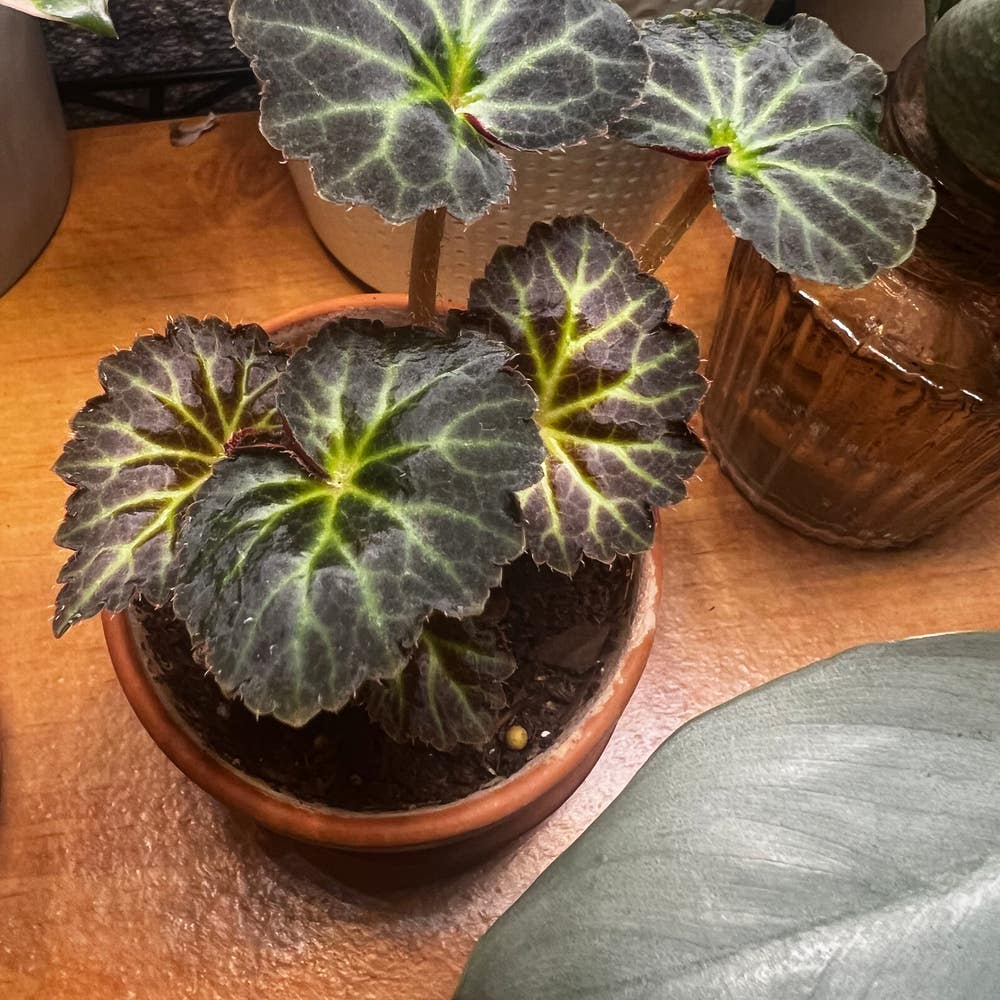💧 Why Are My Begonia 'Challenger' Leaves Mushy?
Apr 21, 2024•3 min read
Prevent mushy Begonia leaves 🍂 with our expert care and rescue guide!
- 🚨 Discoloration signals distress; healthy leaves are firm and springy.
- 💧 Overwater only when top inch of soil is dry to prevent mushiness.
- 🌱 Proper drainage and fungus prevention are key to healthy Begonias.
Spotting Trouble: Identifying Mushy Leaves in Your Begonia 'Challenger'
🚨 Visual Signs of Distress
Discoloration is your Begonia's flare gun. If leaves are turning yellow, brown, or translucent, it's not a fashion statement; it's a crisis. They should look like they're ready for a photoshoot, not like they've been boiled beyond recognition.
🖐️ Tactile Clues: How the Leaves Should Feel
A healthy Begonia leaf should have a bit of an attitude when you poke it. If it just caves like a flan in a cupboard, sound the alarms. Firm and springy is the goal; anything less is a sign of trouble.
🚨 Early Warning Signals
Before your plant's leaves turn into a soggy mess, they'll send SOS signals. A leaf that's more clingy than a wet paper towel is begging for a change. And if the soil smells like it's trying to ferment something, you've got issues brewing beneath the surface.
The Watering Balancing Act
🌊 The Perils of Overwatering
Overwatering is a common misstep for Begonia 'Challenger' enthusiasts, transforming robust leaves into mushy disappointments. The key symptom? Leaves that feel like a wet paper towel. To avoid this, water only when the top inch of soil is dry to the touch.
Consistency in watering is crucial, but so is adaptability. Your Begonia 'Challenger' will drink more during the growing season and less when it's cooler. Adjust your watering habits to the rhythm of your plant's life cycle, not the other way around.
💧 Soil Moisture Mastery
To master soil moisture, trust your senses. A moisture meter can be your ally, but so can the classic finger test. If the top inch of soil feels dry, it's time to water; if not, hold off.
Establishing a watering schedule is more art than science. Observe your Begonia 'Challenger's' reaction to watering and tweak as needed. Remember, underwatering is a safer bet than overwatering—roots can reach for moisture, but they can't escape a deluge.
Ensuring Proper Drainage
🚰 The Right Home for Your Plant
Selecting a pot for your Begonia 'Challenger' isn't about aesthetics alone; it's survival gear. Drainage holes are a must—think more is better. Terra cotta trumps plastic, letting soil breathe and dry like a charm.
🚰 DIY Drainage Boosters
Boosting drainage isn't rocket science. Add a gritty friend like perlite or coarse sand to your soil mix. For extra credit, a layer of pebbles at the pot's base acts like a mini drainage system, keeping roots high and dry.
Battling Fungal Foes
🍄 Spotting Fungal Culprits
Fungal diseases in Begonia 'Challenger' can be sneaky. Look for powdery mildew, a white dusty coating, or the dreaded root rot, which turns roots into a mushy disaster. Leaf blight and Phyllosticta leaf spot are also common, with blight softening leaves and leaf spot creating unsightly holes. Watch for brown spots with concentric rings—these are fungal red flags.
🛡️ Fungus-Proofing Your Plant
Prevention is your best weapon against fungal diseases. Ensure good air circulation and avoid overwatering. If you spot trouble, isolate the plant and remove affected leaves. For treatment, fungicides are your go-to, but use them as directed—overuse can lead to resistance. Consider copper fungicides or Bacillus subtilis for a biocontrol approach. And don't forget about cultural practices: well-draining soil and clean tools are your silent guardians against fungi.




